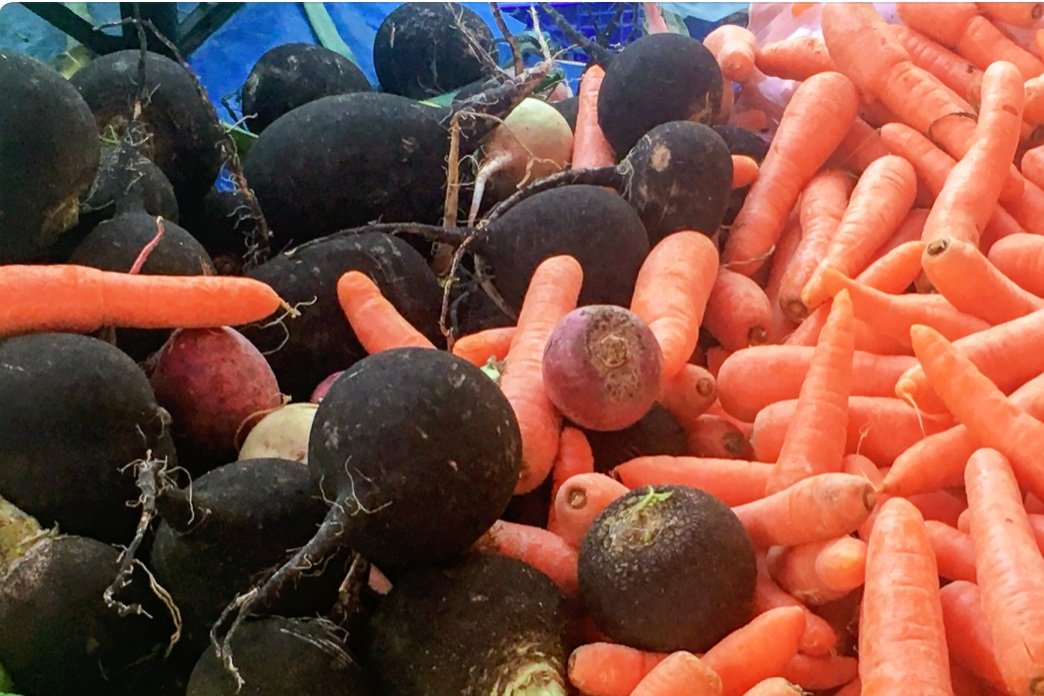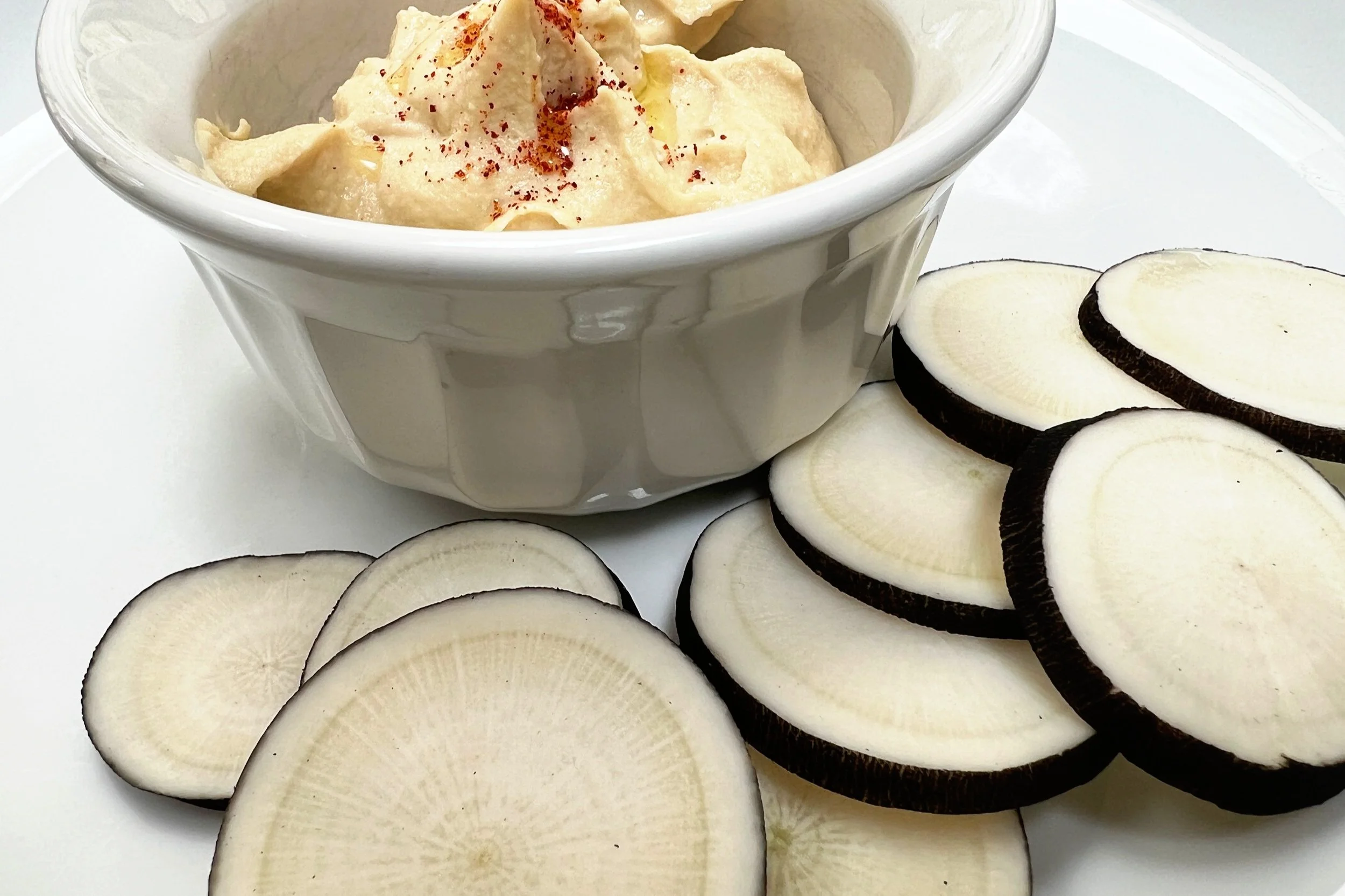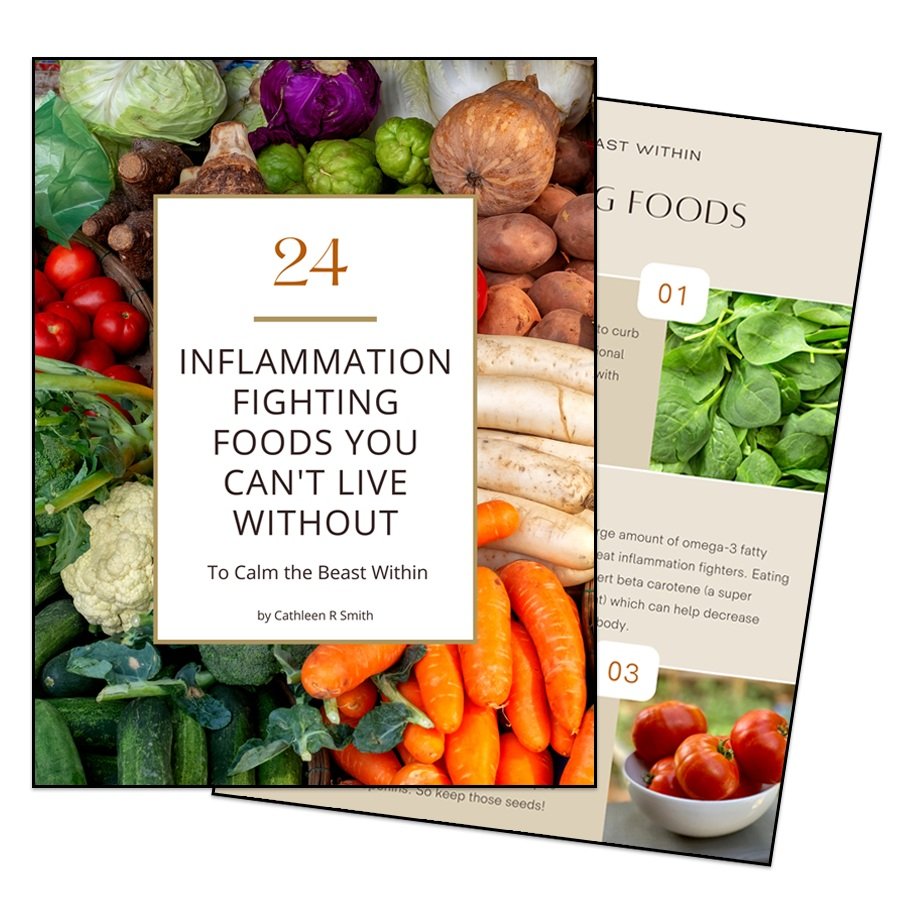Do Carrots & Radishes Make You Giddy?
It’s okay if you say “sometimes”.
A couple of months ago (after the 7 degree freeze), I figured it was time to check out what garden veggies might have survived the freeze fallout (besides my one little head of red romaine - LOL).
Before Mother Nature socked us a good one, I was counting on a bunch of carrots and radishes. I had planted a couple different varieties of each - all from Southern Exposure Seed Exchange. There were Danvers 126 and Red Core Chantenay carrots, plus some Miyashige White Daikon and Black Spanish Round radishes.
The only ones that survived were some of the Danvers 126 carrots and the Black Spanish Round radishes (giddiness here!). And I’m going to count myself lucky! Even though I had green tops, I truly didn’t expect to find anything under the soil.
So carrots are pretty easy to grow. They like well-draining soil that’s been loosened about 8 to 10 inches deep. You want to sow the seeds directly into the ground about 4 weeks before your average last frost. Plant the seeds 1/4 inch deep with 3 seeds every inch. If you’re planting more than 1 row, then your next row will be about 1 foot away. Cover with a very light layer of soil (carrot seeds are tiny) and when your plants start to poke through, thin them out so there’s 1 plant every 1 to 2 inches. If you don’t thin, your carrots won’t have enough room to get very big.
Radishes also are pretty easy to grow. But they’re planted at different times with different spacing depending on what you want to use them for. For salad radishes, you’ll plant them about the same time as carrots as soon as the soil can be worked. Sow them 1/2 inch deep, about 1 inch apart and thin as needed. Since radishes germinate way faster than carrots, mix some radishes in with your carrot rows so you don’t forget where you planted your carrots!
For fall storage radishes, start sowing seeds about 10 weeks before your first frost date. You’ll plant them about 1/2 inch deep and 2 inches apart in rows about a foot apart. Then thin your plants so they’re spaced about 4 to 6 inches from each other.
Did you know that carrots contain carotenoids which have both anti-inflammatory and antioxidant properties? And carrots contain lutein which can help prevent damage to healthy cells in the body. Plus, I bet you remember your parents telling you that carrots were good for your eyes and made your hair curly - I sure do!
Radishes contain the molecule 13c which can reduce the inflammatory intermediates from blood - they’ve been used as a folk remedy to treat inflammation forever! And radishes contain nutrients that can help lower high blood pressure and reduce your risk for heart disease.
Roasted carrots with thyme, oregano, parsley, sea salt and fresh ground pepper is the bomb! Just slice your carrots however you want, toss the herbs, salt and pepper with some really good olive oil (my fav is from California Olive Ranch), and roast them at 400 degrees until the carrots are tender (about 30 minutes). Keep them covered with foil until the last several minutes so they don’t burn.
While you can roast radishes like you can carrots (although keep them whole and drizzle them with honey before serving), my favorite way to eat radishes is with hummus - and I have a great recipe that I’ll share with you soon!
So carrots and radishes are just a few of the veggies you can easily grow in your garden that are natural anti-inflammatories and have tons of therapeutic properties that can help fight a variety of common health issues.
If you want to learn more about other whole foods that are natural anti-inflammatories and how they can help fight chronic inflammation, join my email list and get my FREE downloadable PDF guide to 24 Inflammation Fighting Foods You Can’t Live Without - it’s worth it!








